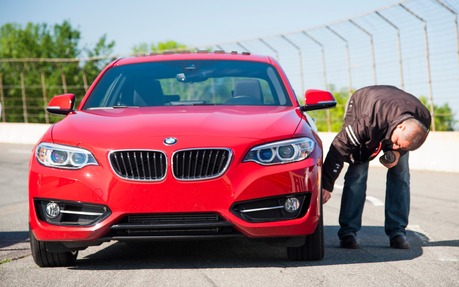Eight Misconceptions About Car Insurance
This advertorial is brought to you by Groupement des assureurs automobiles (GAA)
1. It costs more to insure a red car.
FALSE. Car insurance premiums are established based on a number of factors. Among other things, these include the vehicle’s features (model, year, equipment, etc.), what you use it for (mileage and location of use), your profile (age, gender, etc.), the coverage chosen and your claims history.
However, the colour of your car is not factored in when your insurer calculates your premium.
2. Men pay more for insurance than women.
TRUE and FALSE. It all depends on the age group. According to the stats*, premiums vary significantly among the 16 to 20 age group (premium for collision coverage in 2014: $739 for men and $524 for women). The gap then narrows with each subsequent age group, with premiums virtually the same for the 45 to 64 age group.
It’s interesting to note that the average premium is directly related to claims frequency: the greater the frequency, the higher the premium for collision.
3. Quebec drivers pay the lowest premiums in the country.
TRUE. The average auto insurance premium was $717 in Quebec in 2014 (average premium for property damage and SAAQ premium for bodily injury).
A comparison with our closest neighbours reveals that premiums averaged $766 in New Brunswick, and $1,488 in Ontario.
4. Under the no-fault plan, I’ll never be held liable for any accidents I could cause.
FALSE. In Quebec, the no-fault plan applies only to Société de l’assurance automobile du Québec (SAAQ) coverage for bodily injury. This means that the SAAQ does not factor in liability when indemnifying you.
However, that’s not the case for property damage to your car. Your private insurer factors in your liability. You may be 100%, 50% or 0% at fault for the accident. Your liability is based on the Direct Compensation Agreement (DCA), which illustrates accident scenarios involving drivers.
If you’re at fault, you’ll be compensated only if you have collision or upset coverage, and you’ll be required to pay the amount of the deductible. However, if you’re not at fault, you’ll be indemnified even if you don’t have collision coverage, and you’ll not be required to pay the deductible.
5. I have to file a claim with my home insurer if my car is stolen.
POSSIBLY. If other belongings inside the car, such as a laptop, coat or golf bag, are stolen along with your car, then your home insurer will indemnify you for those items.
Your auto policy will cover accessories attached to your vehicle, including booster cables, luggage rack, and winter or summer tires which you were transporting in the car.
6. My auto policy won’t cover me if I cause an accident by running a red light.
FALSE. If you have collision coverage to cover damage to your vehicle, you’ll be compensated by your insurer. However, you’ll have to pay the amount of the deductible. If you only have civil liability coverage, you’ll not be indemnified for this accident.
7. I can contest my insurer’s decision to declare my car a total loss.
TRUE. Generally, insurers declare a car to be a total loss if the cost of repairs exceeds its value. Your insurer takes several factors into account, including the vehicle’s age, general condition, loss-related repairs and market value.
If you disagree with your insurer’s decision, you can document your file, and negotiate a settlement with your insurer. If you cannot agree, you can also contest the insurer’s decision through arbitration or before the courts.
8. My car will automatically be repaired with new parts.
FALSE. Under the basic auto insurance policy, vehicles are repaired with recycled parts.
To have your vehicle repaired with new parts, you need to have purchased:
- “Replacement cost” endorsement (Q.E.F. No. 43 – Change to loss payment endorsement – Option 43A – Partial Loss – New Parts)
- Replacement insurance (Q.P.F. No. 5).
If you have neither coverage, your car can still be repaired using new parts if you pay the price difference.
There is one exception. New parts are always used to replace windshields.
* Property damage only. GROUPEMENT DES ASSUREURS AUTOMOBILES, Automobile Statistical Plan, General Results, Private passenger cars, 2014.
